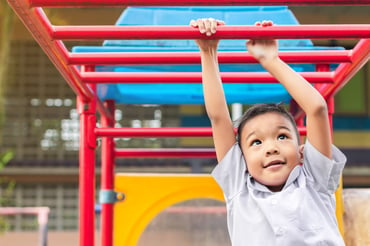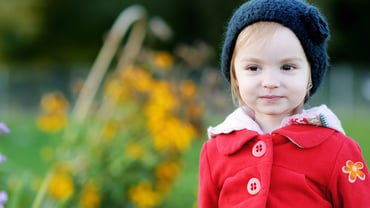Joint Attention – The Ultimate Social Share
Facebook! A way to keep in touch with people who are all over the globe from the safety and convenience of your own home. Pretty amazing, isn’t it? One of the things I enjoy most about Facebook is the simple way you can ‘share’ information with other people. ‘Sharing’ mainly serves a social purpose, saying “Hey, I thought this was interesting and I want you to see it too.” That, in its most basic form, is what we call joint attention – and it’s a vital part of cognitive-language and social development. Joint Attention is the phrase used to talk about the earliest forms of social sharing. Lots of times we may hear about it in reference to “red flags” for Autism. The main point of joint attention is that it is a social act for the mere purpose of sharing someone else’s attention. That’s it. Nothing else. It serves as one of the earliest forms of social communication and social development in children build from it. Here’s an example of a joint attention moment from my family. When my two boys were six years and four years old, we were outside on the porch together with their two year old sister. I was working on grading a paper while they played on our big front porch. Then I heard the infamous giggle of a little kid who was enjoying something mischievous. I looked up and watched as my four year old snickered at my two-year old daughter who was stuffing a handful of dry cat food in her mouth. (Gross, right?). He quickly looked to his four year old brother, who also witnessed the unsavory sight. (At this point they are not ‘sharing’ their attention, they are only experiencing the attention and moment on their own.) Then the joint attention happened. My younger son looked over at my older son…then they both looked at their little sister, then looked back at each other and laughed. The moment that had been on their own had now become a ‘shared’ experience. (At this point I DID intervene and pull the poor little girl away from the cat food) But the entire point of the interaction was purely for the social part of it. Joint attention at its most beginning and basic phase is the simple act of sharing an experience with someone. Babies show this skill VERY early in development, usually with a shared toy and their parent/caregiver. In a cultural way, we do this on Facebook when we ‘share’ someone’s post. If I share a recipe from one friend, I don’t do it to gain anything. I simply share it for the pleasure of giving it to others – seeing if they will appreciate the info as much as I did. Sharing those experiences early on, by simply eye-gazing with your infant and talking to him/her is a great way to not only develop bonding, but also deepen the development of joint attention. Sit or lay your baby in a position where you can get to eye level and watch for her eyes to make focus with your face, your eyes – then talk in gentle tones with her. Each time she meets your eyes, talk to her to reinforce the importance of that shared eye gaze. It doesn’t have to last a long time – five minutes a couple of times a day, but it may strengthen your child’s joint attention and cause a deeper bond in the process. To learn more about Joint Attention and the importance of play in children, researcher and clinician Carol Westby provides much more detailed information in her work. Some of her articles are available at www.autismteachingtools.com
Want to know how a Therapist can Help?
Call (828) 398 0043 or click on the schedule button.



